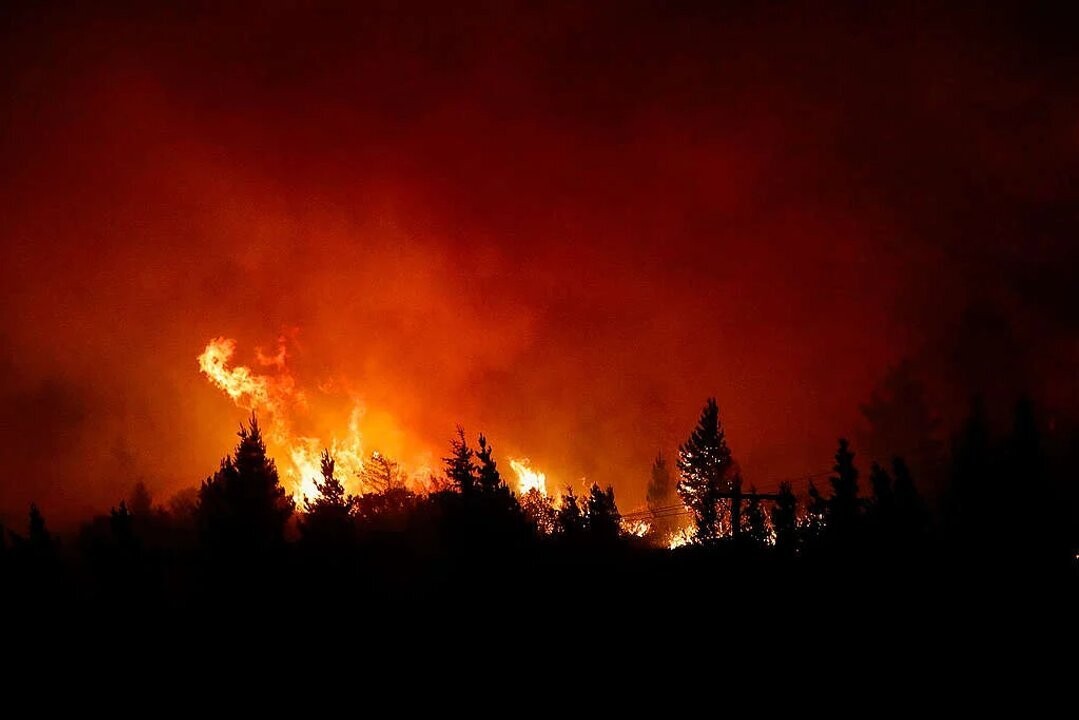
Greenpeace's forest campaign coordinator, Hernán Giardini, predicted that the fires in Nahuel Huapi National Park will stop completely in April, and warned that the fire threatens to spread along the slopes of the mountains with native forests towards Bariloche. "The danger of an urban fire is latent," he warned. He subordinated it to a situation of a high level of ignitions on a very hot and windy day and emphasized that recently a dome was ignited on Mount Otto, which, if not extinguished quickly, would catch the cypress and some pines, and "it could have ended up in the center 'devouring' many houses."
A Greenpeace representative for 19 years, Hernán Giardini discussed the topic in the context of the wildfires currently affecting the Patagonian region, both in Nahuel Huapi National Park and Epuyén. Regarding the controversy over the origin of the recurring fires in Patagonia, the expert elaborated: "There are a few ignitions that have to do with natural issues, but 95% of the cases are related to human causes. It can be due to negligence, which is significant: poorly extinguished barbecues, campfires in inappropriate places, cigarette butts, burning of forestry waste. There is also a percentage of intentionality."
In relation to that last option, he detailed: "Some cases are related to psychological issues, by pyromaniacs, many more than we imagine. There are studies about a recurrence, with people who dedicate themselves to setting fires just because." He added: "Another intention may be related to seeking a change in land use." Giardini indicated: "The issue, especially in Patagonian cities, deserves a program to replace the pines, in order to restore the native forest that used to exist."
Beyond the causes, he emphasized: "That the ignitions turn into significant fires is related to the fact that the current system, both at provincial and national levels, is generally not adapted to the climate crisis we are experiencing." He pointed out: "We should have many more firefighters and infrastructure for rapid response to ignitions." He cited the example that even in more equipped countries, when there is no timely intervention, the flames cannot be stopped: "In the United States, Los Angeles is on fire and with all the technology they have, they cannot stop it, because once a significant fire is unleashed, extinguishing it is practically impossible, and what is done is to control it." He proposed: "There needs to be an early warning system."
The fire hotspots come from an area of difficult access, in the Strict Reserve, within a humid forest and on steep slopes. The affected area at various points had risen, according to the latest report, to approximately 4,591 hectares of forest in total, in a zone between Cerro Alcorta and Cerro Colorado, on Mount Bastión and the bottom of Lake Martín in a section affected by fire in 2022.
At the tail on Lake Los Manzanos, there was no significant advance. In the Cascada Los Alerces area, an Emergency Committee team continues with preventive tasks and monitoring of the fire to protect local populations. Access to the Cascada Los Alerces Circuit remained restricted, allowing only official vehicles and residents. On the other hand, access towards Tronador was under constant observation. From Nahuel Huapi National Park, they communicated that the fire remains active mainly in Cerro Colorado, Laguna Quetro, and Las Melisas "where the fire spreads backward." In these areas, the firefighters combat the flames directly with manual tools and water equipment, with the collaboration of aerial resources (both for personnel transport and water drops). At the same time, on Cerro Alcorta, there are three park rangers and ten locals (five from Huala and five from Mesa), who are creating "a line of penetration" for the firefighters to enter to carry out suppression tasks.
The fire began to be fought on December 26, following a considerable number of lightning strikes during the storm on December 16, which is believed to be the origin of the ignitions. Since then, hundreds of firefighters have worked tirelessly, facing difficult conditions to control the advance of the fire, whose spread was favored by electrical activity in the area. So far, the fire has affected a large area, exceeding 4,000 hectares burned. The situation complicated in recent days due to the arrival of a cold front with strong winds and gusts exceeding 50 km/h, which intensified the behavior of the fire. In particular, the fire concentrated in the areas of Cerro Colorado and Cerro Bastión, generating large columns of smoke visible in nearby areas such as Lake Steffen and El Manso.
Giardini also pointed to a relevant issue in this region: the plantations of exotic species.










